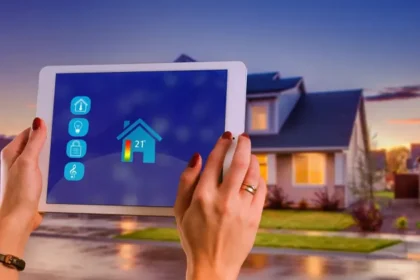Even as more people become excited about the potential of electric vehicles (EVs), many worry about finding enough charging points. Budgeting for a home EV charging installation could solve a large part of that problem, but the solution has challenges, too. Individuals must understand these EV charging installation obstacles now to begin tackling them.
Insufficient Electrical Capacity for a Home EV Charging Installation
Some homeowners don’t realize not all residences support home EV charging installation requirements. Electricians are responsible for verifying the property’s suitability and setting appropriate expectations for costs and timing.
Some older homes in the Northeast and Midwest United States cannot support level 2 chargers because of insufficient electrical capacity. These are the most common types, but they use up to 80 amps, meaning the house may need a total electrical capacity of 200 amps.
People can opt for strategic upgrades to increase electrical capacity, but these changes can lengthen the EV charging installation timing and raise price estimates. However, electricians are in excellent positions to educate prospective consumers about suitability and potential barriers.
A good starting point is to design a webpage listing some of the minimum requirements and price ranges for upgrades if people cannot meet them. Electricians can urge customers to schedule in-home consultations at the end of the educational content. That way, people won’t get their hopes up too early, but they’ll come into the situation realizing not all homes can have EV chargers installed.
Electrician Shortages Making EV Charging Installation Difficult
The rise in EV popularity comes simultaneously with an electrician shortage. That may mean people wait longer than expected for a home EV charging installation to begin. Justin Mausch responded to the demand by founding an EV charging company called Effortless Electric. Customers can select, procure and schedule installations for residential charging infrastructure through that business.
Mausch believes the biggest challenges for electrical companies are labor shortages and a lack of continuing education for recruits. He also sees a unique opportunity to develop electricians into professionals who excel in their work and become trustworthy resources of industry knowledge.
Agreeing to a home EV charging installation represents new territory for most customers. However, electricians can provide peace of mind through knowledge acquired through real-world experience. For example, THWN-2 wire is a popular choice for residential installations because it tolerates temperatures up to 90 degrees Celsius and suits wet and dry areas.
Some companies specializing in home EV charging installation assistance also cater to electricians who want to expand their skills and address increased needs. They offer dedicated courses featuring details these professionals need to broaden their customer bases by appealing to electric vehicle owners.
Some companies also specialize in commercial EV charging solutions, recognizing the increasing demand for infrastructure in public and business spaces. These companies provide tailored services to businesses looking to install EV chargers at commercial spaces, offering guidance on equipment, installation, and maintenance. The benefits of EV chargers at commercial spaces include not only attracting more customers but also supporting employees with convenient charging options. As electric vehicles become more common, businesses that invest in these installations can enhance their appeal, demonstrate commitment to sustainability, and stay ahead of industry trends.
Continued progress in reducing labor shortage gaps and prioritizing education should make it easier for customers to get chargers installed at home.
No Suitable Charger Location
Data from a 2022 study about people in the United Kingdom applying for mortgages indicated that 30% lacked garages or other dedicated spaces for cars. Similar issues exist in the United States, where charging cords often snake across public sidewalks so people can charge their street-parked vehicles. A home EV charging installation is out of the question for most apartment dwellers, so more complexes are installing shared charging points.
Another solution is to invest in more local infrastructure, such as on-street chargers for public use. People who live nearby but don’t have driveways or garages may be more likely to see those points as feasible alternatives.
Someone who opts for an EV charging installation can also turn it into an income generator by charging modest fees to let private individuals use it when needed. Not everyone can afford their own EV charging installation infrastructure. However, that’s not necessarily a barrier if enough people nearby with chargers are willing to share them.
Progress Will Increase EV Adoption
These are some things preventing people from having EV chargers at home. Awareness of these obstacles and working collectively to reduce them will make individuals feel more confident about owning and driving electric vehicles.










